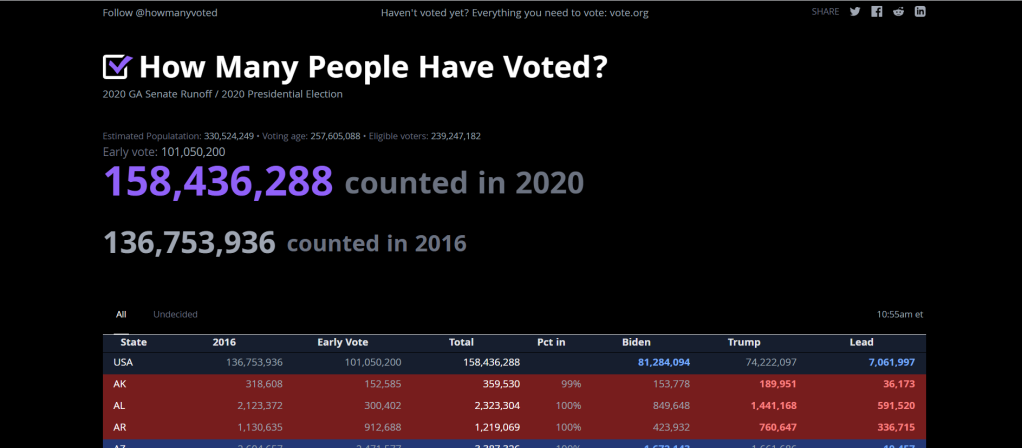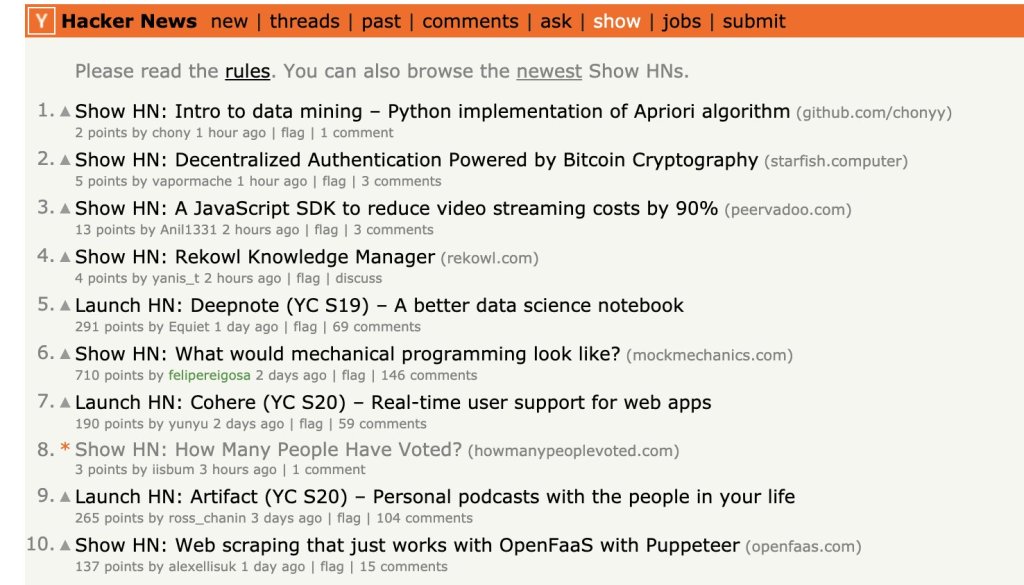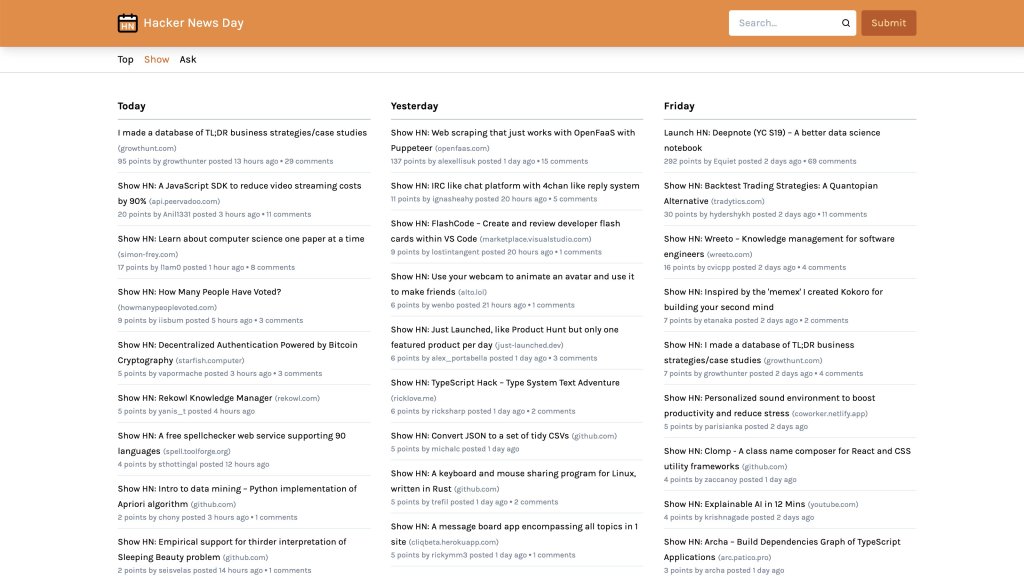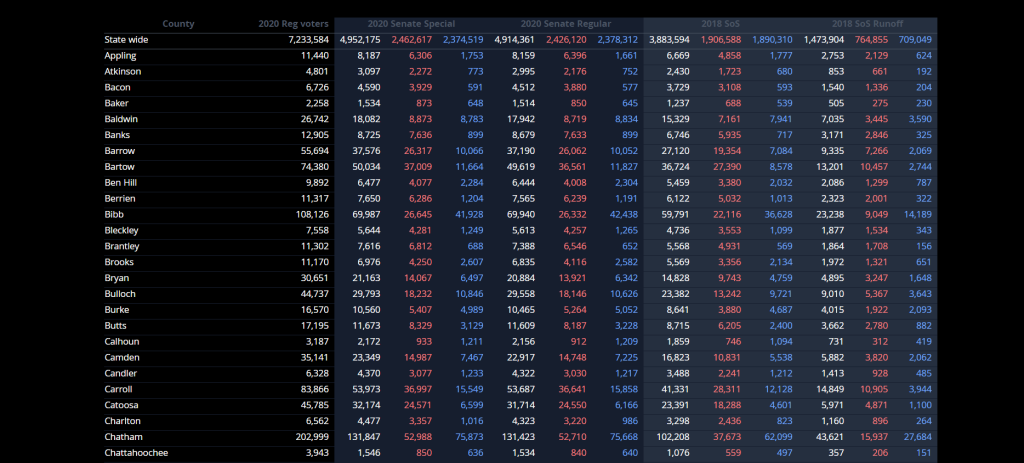Election Day 2021 Wasn’t a Great Day for Democrats in Virginia — But It Was a Cyclone of Victory for Those in Georgia
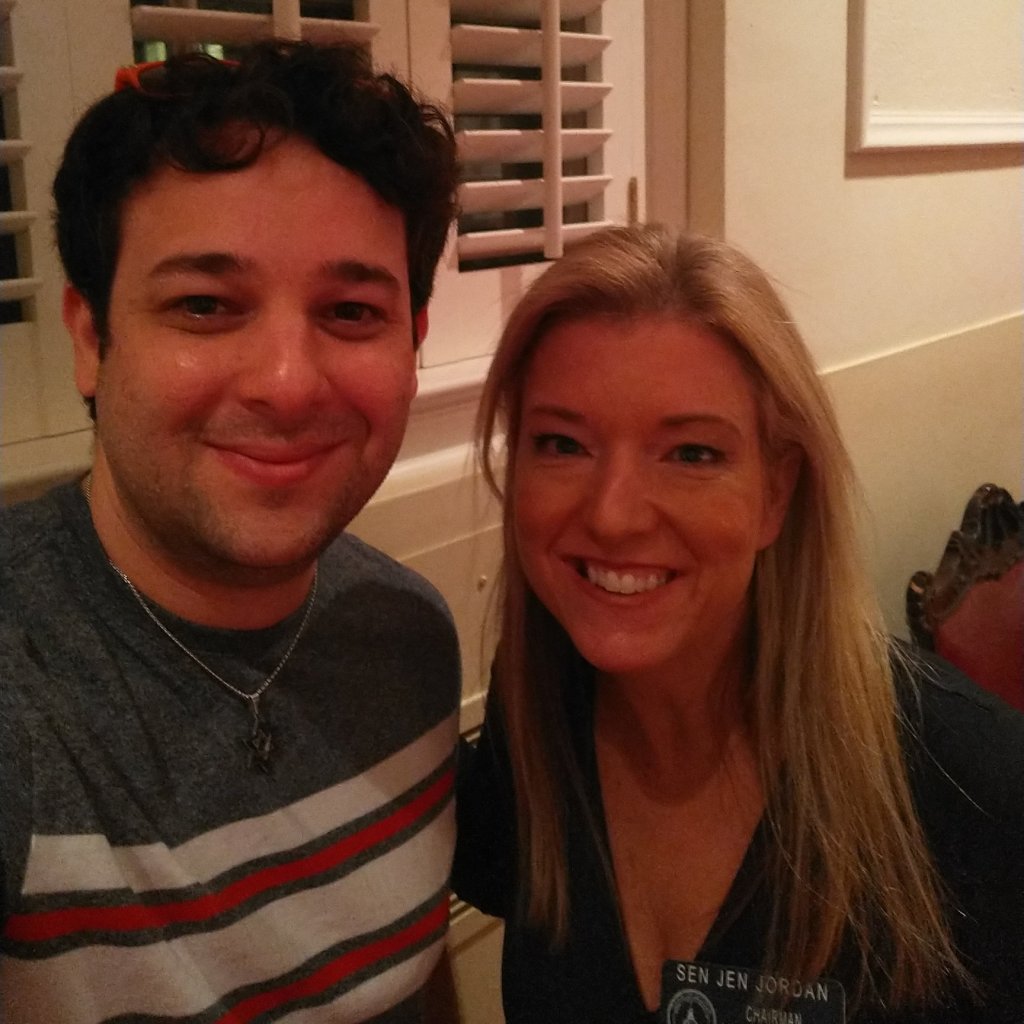
The Rundown — Why GA Democrats Shouldn’t Freak Out Over the 2021 Election Results:
- Virginia is not a harbinger for Democrats elsewhere — here’s why: VA was a mess of a flawed candidate who ran a campaign that did not register with young voters or independents; VA voters had spent over a year listening to McAuliffe as a political pundit on CNN; McAuliffe sucked all the oxygen out of the race for any other Democrat; McAuliffe ran a campaign distinctly removed from any progressive goals
- New Jersey was actually a good sign for Democrats — they held off 44 years of history that said they couldn’t hold the Governor’s seat for reelection, something they hadn’t done since 1977
- Georgia saw big gains for Democrats — and not just in Atlanta; Democrats around the state flipped forty-one (41) seats across twenty-one (21) counties; Republicans flipped only six (6); most importantly, Democrats won in places far outside metro Atlanta, winning along the Florida and Alabama borders, in south Georgia, and in east Georgia; the night VA Democrats experienced was not mirrored by the experience of GA Democrats
RUNOFF UPDATE! — Following Nov. 30th’s runoff, Georgia Democrats actually increased their number of flipped seats from forty-one (41) to forty-eight (48), adding an additional seven (7) seats and at least three (3) more counties to their haul. The Nov. 30th runoff also brought some serious implications for 2022 — see more below.
If you’re reading any of the political news that’s coming out of the national machine — on both sides, frankly — then you might succumb to the political rhetoric now that Election Day 2021 was a disaster for Democrats and a harbinger of a terrible midterm cycle next year in 2022.
From CNN to The New York Times to Nate Silver, the narrative is that the conventional wisdom regarding midterm elections has already begun to play out before our eyes and Democrats are likely to have their butts handed to them next year.
Here’s why that distorted narrative is not only incomplete — it might arguably be dead wrong.
First, let me take to task Nate Silver, the statistician who always seems to have a good reason for why his predictions never mirror reality. Frankly, from a macro perspective, he’s wrong way more than he’s right — all through the 2020 cycle, Silver’s readers were led to believe that Democrats would most likely pick up Senate seats in Maine and North Carolina, with similarly interesting potential in Iowa and Alaska. Georgia was considered the biggest of Hail Marys — barely worth a postscript.
Democrats lost in all those states — except Georgia. Where they won both Senate seats in the January runoff.
Those of us living here know why — and the press living other places doesn’t seem to understand yet that the dynamics of the state have shifted dramatically since 2018.
The national media’s saving grace — if there is one — is the AJC’s Greg Bluestein‘s tweets and first-hand analysis of what’s going down here.
But now, the real stuff — here’s everything of note that the national press left out of the discussion around Election Day’s results… and why it should change the way Georgia Democrats are feeling as the year wraps up.
First Virginia:
Here’s the reality: Terry McAuliffe was a flawed candidate. Whether or not I like him, the reality of the situation is that he walked into the contest with an insane amount of baggage.
He’d just spent the entire 2020 election cycle as a talking head on CNN — meaning that all those Virginia independent voters (especially suburban women) whose votes he needed had spent a minimum of 12-14 months listening to him talk in their ears, likely saying things not well crafted for their concerns regarding Virginia itself. Strike one.
Add to that his Clintonite politics, which, whether you like it or not, are out of step with most young voters in this day and age (the same young voters who helped propel Biden to the White House). Strike two.
Pile on the fact that his presentation of himself is one of 1998. It doesn’t matter that he was Governor just a decade ago — his whole persona is just… well… it’s just not exciting at all. There’s really no other way to say it: Youngkin’s persona of the vest-wearing BBQ-hosting suburban dad just looked better than whatever the hell McAuliffe was doing. Strike three.
On top of all of that, McAuliffe sucked up all the oxygen in the Virginia races. I couldn’t even tell you who ran for the other statewide offices — and I’m a political wonk. The whole Virginia race was about McAuliffe — not a great structure to a race where the main candidate walks into it with so much baggage. Strike four.
So, why did Democrats lose so badly in Virginia?
- Bad choice of an out-of-touch candidate
- A candidate who lacked the ability to really motivate younger voters
- Close to zero energy put into compartmentalizing — McAuliffe’s destiny became the destiny of all VA Democrats that night
Next, New Jersey:
One of the biggest stories on Election Night was that New Jersey was wayyyyy closer than it should have been and this means a looming disaster for Democrats in 2022.
Except that’s actually not what really happened.
Phil Murphy was actually the first Democratic Governor to win reelection in New Jersey in 44 years!
Not since Brendan Byrne in 1977 has a Democrat won reelection in New Jersey for Governor.
While New Jersey is pretty liberal on the federal level, it’s more conservative on the state level. Don’t forget that Republican Chris Christie won here — twice.
So the story out of New Jersey on Nov. 4th should have been: “Murphy Turns Back 44 Years of History”.
Murphy won reelection when 44 years of history said he should never have been able to.
New Jersey is a triumph for Democrats — not a defeat.
So that’s two big stories down, and one to go.
Except the one to go is the one that everyone seemed to forget after Election Day.
Now, onto Georgia, the main course:
Here’s why Georgia was actually the biggest political story of the night that no one talked about.
Georgia didn’t play host to any nationalized statewide races and the only “local” race that the national media machines cared about at all was the race for Atlanta mayor.
But while CNN and the NYT were obsessing over who was going to face Kasim Reed in the runoff (funny turn of events there also, no?), Democrats were competing in local races all over the state.
Actually no, Democrats weren’t competing — Democrats were dominating in local races around the state of Georgia.
By November 4th, Georgia Democrats had flipped 41 seats across 21 different counties in Georgia!
Republicans picked up 6.
RUNOFF UPDATE: On November 4th, Democrats had flipped an insane 41 seats across Georgia — by December 1st, that number had risen to 48 flipped seats across 24 counties.
Let’s take a moment for that to sink in.
Democrats in Georgia flipped eight times as many seats as Republicans.
But even that isn’t the end of the story. Because the next assumption is that the lion’s share of all these seats were in the metro Atlanta area.
Except they’re not.
Buckle up and pull out your Google maps, because Democrats flipped seats in all these counties:
- Ben Hill (south-central Georgia — near Tifton)
- Berrien (south-central Georgia — near Tifton/Valdosta)
- Brooks (Georgia-Florida border — near Valdosta)
- Chatham (Savannah)
- Clarke (Athens)
- Clayton (south Atlanta)
- Cobb (Atlanta)
- Cook (south-central Georgia — near Tifton/Valdosta)
- DeKalb (Atlanta)
- Dougherty (Albany)
- Fulton (Atlanta)
- Grady (Georgia-Florida border — near Tallahassee!)
- Gwinnett (Atlanta)
- Heard (Georgia-Alabama border — near La Grange)
- Henry (McDonough)
- Houston (central Georgia — south of Macon)
- Jackson (north of Athens)
- Jefferson (east Georgia — near Augusta)
- Lanier (south Georgia — near Valdosta)
- Meriwether (west Georgia — near La Grange)
- Mitchell (south Georgia — near Albany)
- Oconee (near Athens)
- Troup (Georgia-Alabama border — La Grange)
- Walton (between Atlanta and Athens)
- Worth (south-central Georgia — near Albany)
Democrats flipped mayorships in Cairo, Stone Mountain, Hampton, Warner Robins, Sylvester, and McDonough, as well as critical city council seats in Lawrenceville, Peachtree Corners, Sandy Springs, Tucker, Dunwoody, Brookhaven, Stone Mountain, Kennesaw, and Powder Springs.
But here’s the bigger point:
Of all the counties where Democrats flipped seats, only about 6 out of those 24 — (25%) — are real typical Atlanta Democrat territory (Cobb, Gwinnett, Fulton, DeKalb, Clayton, and arguably Henry counties).
A further 3 of those 24 — (12.5%) — are in tougher-than-Atlanta, but still not totally unexpected counties that encompass Democratic-leaning cities (Chatham, Dougherty, and Clarke).
The remaining 16 of 24 flips — (~67%) — were in counties that I was shocked to hear about — counties along the borders with Florida and Alabama, and out in the middle of territory I would never have imagined Democrats even being competitive, let alone winning!
I mean, who ever heard of post-2000 Democrats running competitive races in any of these counties: Brooks, Berrien, Ben Hill, Walton, Troup, Jackson, Jefferson, Oconee, Mitchell, Meriwether, Lanier, Cook, Grady, Worth, or Heard.
Democrats in Georgia picked up an astonishing 41 local seats on Election Day — proving that they’ve come to really play ball in Georgia in 2022. And that was without major names on any of the tickets.
That number has now increased to a total of 48 local seats following the runoff — including LaRhonda Patrick’s win in Warner Robins, which will make her both the first Black candidate and first woman to hold the mayorship.
2022 will bring Senator Warnock and (finally!) Stacey Abrams to the ticket in terms of star-power brand-name recognition. That’ll juice the voter enthusiasm numbers for sure.
But Georgia Democrats have even more reason to look forward to 2022: they have a host of rising political stars defending hard-won seats and running for statewide office who represent a sea-change in the Georgia Democratic ecosystem.
Yes, the new redistricting maps are very challenging and Lucy McBath and Carolyn Bordeaux will have to duke it out, but Democrats shouldn’t let that distract from the other people who can lend star power down their political tickets. The reality is that a bunch of the state and local seats that Democrats now hold are ones that were drawn to be heavily conservative back in 2010 (for example, look at Scott Holcomb’s seat, HD 81).
Where Virginia 2021 was all about McAuliffe, Georgia Democrats should make sure that 2022 is not about any one person, even if that person is Stacey Abrams.
Go ask Abrams herself — after spending the last two years bolstering voting rights, especially in Georgia, I can’t imagine she’d want anyone to ignore the down-ballot in favor of the top of the ticket. Democrats need to focus on all of it.
They should, for example, direct their attention to bolstering state Sen. Dr. Michelle Au, the only Asian American in the Georgia State Senate, who will be defending her seat in Johns Creek after being intentionally targeted by GOP redistricting efforts this month. And her’s is just one of the seats they should be vigorously defending.
RACE UPDATE! — On December 10th, Michelle Au has responded to GOP gerrymanders of her state senate seat in Johns Creek by switching to the open-seat race for Georgia HD 50, currently held by retiring Representative Angelika Kausche. Kausche flipped the formally-deep red seat in 2018 — it historically belonged to one Brad Raffensperger — when she beat out GOP candidate Kelly Stewart. Following Au’s announcement, Kausche quickly endorsed her candidacy for the Johns Creek house seat.
They should take stock of the powerhouse of individuals who are running for the down-ballot positions — people like state Sen. Jen Jordan (running for GA Attorney Gen.), state Rep. Bee Nguyen (running for GA Sec. of State), state Reps. Erick Allen and Renitta Shannon (both running for GA Lt. Gov.), and state Rep. Matthew Wilson (running for GA Insurance Commissioner).
These are only a few of the names that Georgia voters — and more importantly, organizers — should be paying very close attention to. Political stars like Senators Ossoff and Warnock are most often cultivated in the local ranks — precisely why it’s imperative that these local victories are not only acknowledged, but highlighted.
When examined from a different angle, the 48 state and local seats that Democrats captured on election and runoff nights were most likely captured without the huge war chests or national profiles of people like Abrams, McBath, Ossoff, Warnock, and Bordeaux. When this is combined with the shocking reality that many of these seats were in deeply conservative territory… well, it begins to paint quite a different picture, doesn’t it?
All of this is to say that Georgia Democrats need to shake the distraction of Virginia 2021 and Terry McAuliffe from their lenses and focus on what’s in front of them for 2022. Limping into the midterms with a dour perspective will only play into the narrative that the national media — most of whom don’t even live here — have crafted for Georgia.
Georgia Democrats found a new kind of energy in 2017 when now-Senator Jon Ossoff ran for the 6th District. That energy was only amplified the next year when Stacey Abrams and Sarah Riggs Amico helped show the rest of the country that Georgia could in fact be competitive statewide. And it came to full fruition in January of this year when Jon Ossoff and Rev. Raphael Warnock simultaneously flipped both of Georgia’s Senate seats while Biden was carrying the state.
If Georgia Democrats find themselves distracted now by the narratives that tell them “you can’t” or that it’s a forgone conclusion that’s not in their favor, then it will in fact be a foregone conclusion not in their favor, and theoretical pontification will become a generally accepted fact. 2020 could be easily written off as a political fluke — but that’s neither the case, nor the narrative that we should be listening to.
Georgia Democrats would do well to chew these realities over during the last month of 2021 — because 2022 is gonna be a hell of a ride.




